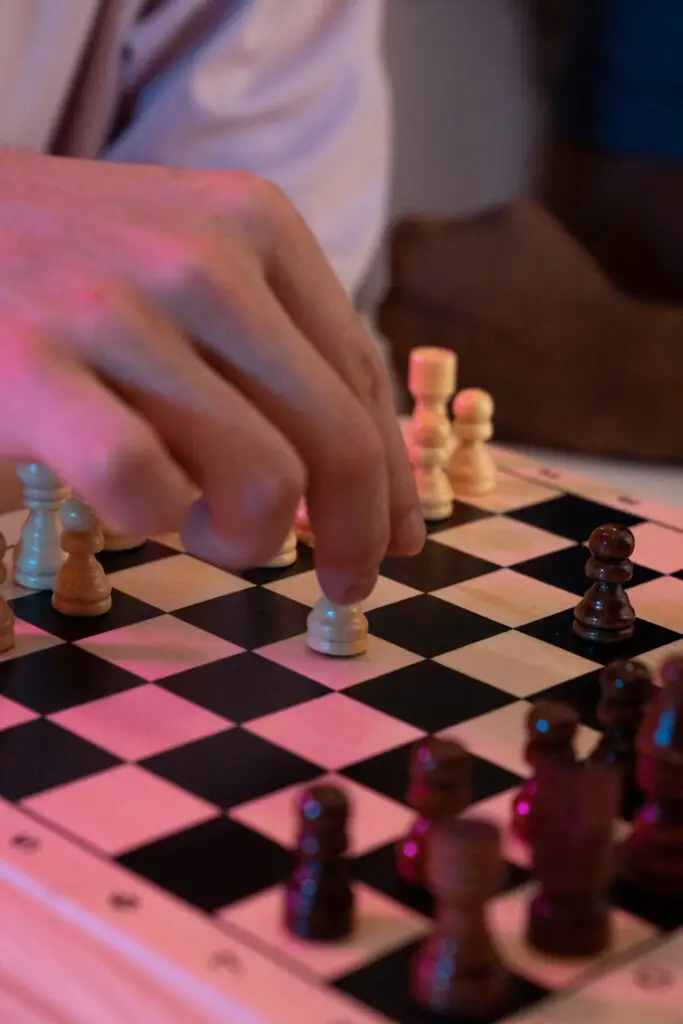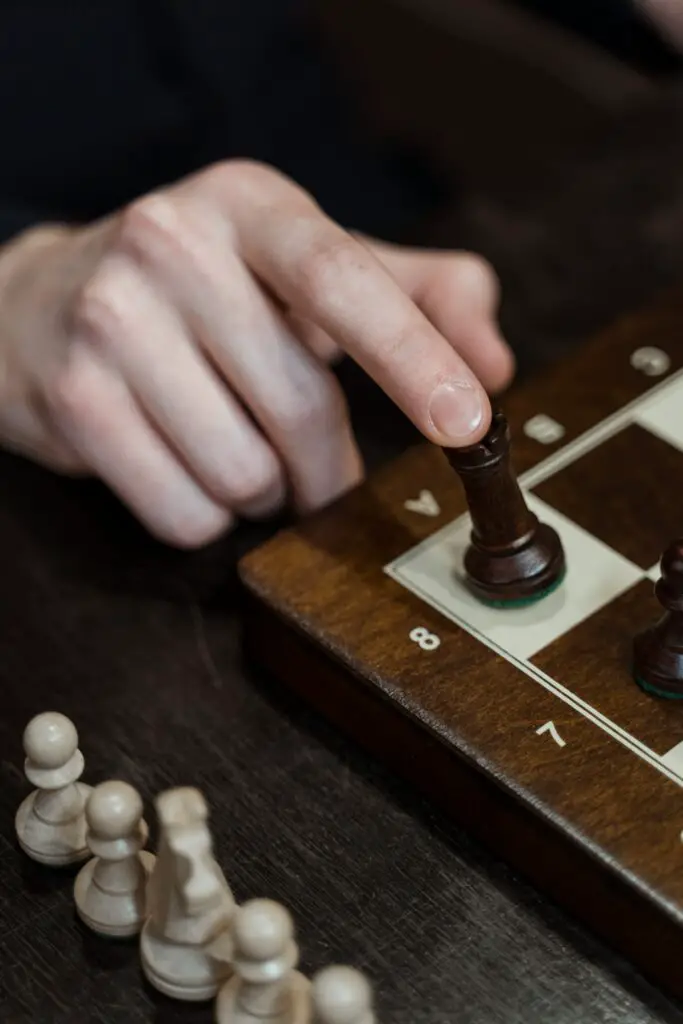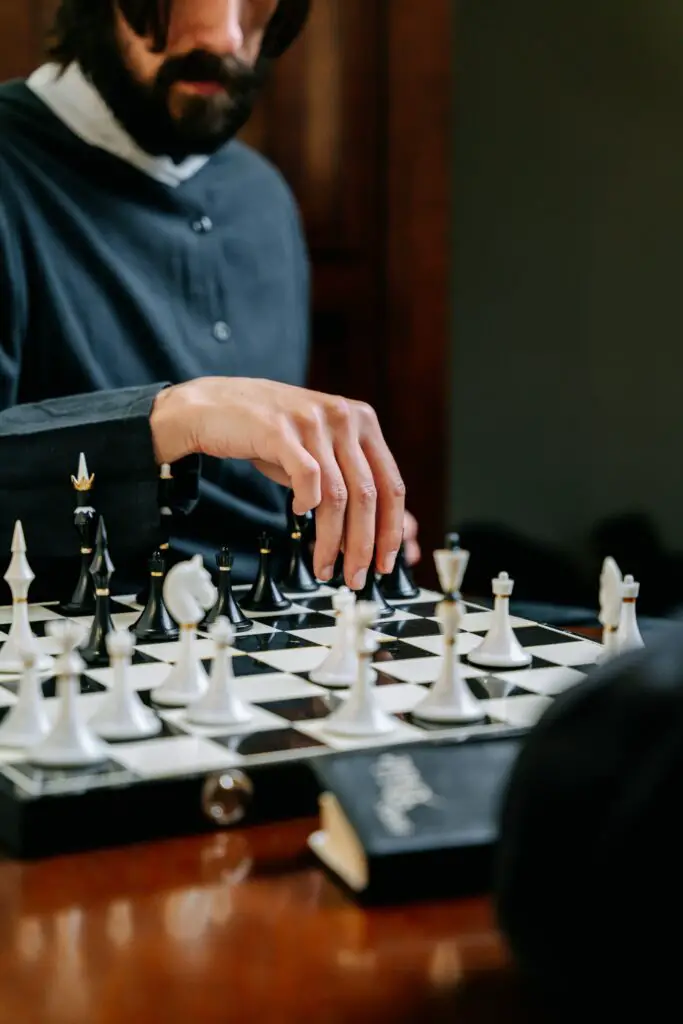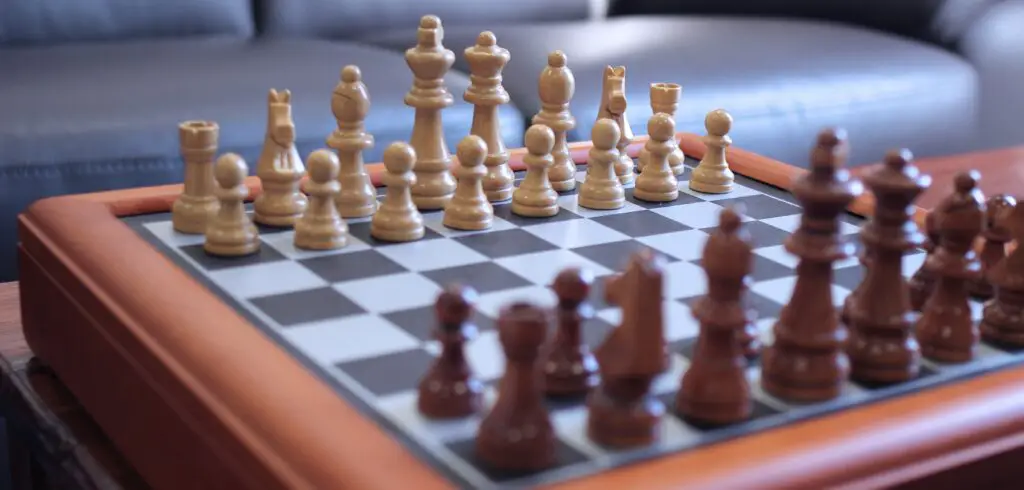Which Chess Pieces Never Move Diagonally?
Contents
- 1 Which Chess Pieces Never Move Diagonally?
- 2 Understanding Chess Basics
- 3 Chess Pieces that Move Diagonally
- 4 Chess Pieces that Move Both Diagonally and Straight
- 5 Chess Pieces that Move Exclusively Straight
- 6 Unique Chess Pieces
- 7 Strategy and Tactics
- 8 The King’s Restricted Movement
- 9 Advanced Concepts
- 10 Chess Variants
- 11 Conclusion
Chess, often dubbed the “game of kings,” is a captivating battle of strategy and intellect. It’s a world where each chess piece has its own unique role and movement rules, akin to a grand orchestra playing its symphony. Today, we’ll be delving deep into the enigmatic world of chess to understand which pieces have a steadfast commitment to straight-line movement. So, without further ado, let’s embark on this thrilling chess journey.
Understanding Chess Basics
Before we dive into the fascinating realm of chess piece movements, let’s lay a solid foundation for those new to the game.
Chessboard Setup and Notation
Imagine an 8×8 grid, like a checkerboard, where each square is artfully arranged in alternating white and black. Rows are numbered from 1 to 8, and columns bear labels from A to H. This arrangement remains consistent, whether you’re playing a casual game or participating in a professional tournament.

The Role of Different Chess Pieces
In chess, each player commands an army of 16 pieces: kings, queens, rooks, knights, bishops, and pawns. Each piece carries a distinct set of abilities and contributes uniquely to the unfolding battle.
Importance of Piece Movement Rules
The heart of chess lies in understanding how these pieces move. Mastery of their movement patterns is the bedrock upon which you’ll build your strategies, set traps for your opponent, and ultimately achieve victory. Now, let’s uncover which chess pieces never venture into diagonal territory.
Chess Pieces that Move Diagonally
Our exploration begins with the Bishop. While it may not be the flashiest piece on the board, its consistent diagonal movement pattern is undeniable.
The Bishop
Description and Appearance
Visualize a Bishop as an elegant, towering piece with a distinctive mitre-like crown. Its demeanor may seem regal, but it harbors destructive potential.
Diagonal Movement Pattern
The Bishop’s movement is exclusive to diagonal paths. It gracefully glides across the board, limited to squares of its starting color. This diagonal prowess enables Bishops to control long diagonals and exert influence over distant areas of the board.
Example Scenarios
- Imagine your opponent’s Bishop strategically placed in a corner. It lurks there, casting a watchful eye over the battlefield, limiting your maneuverability.
- Now, picture having two Bishops in your arsenal, one for light squares and one for dark squares. Together, they form a formidable duo, covering every corner of the board.
With the Bishop’s diagonal capabilities in mind, let’s move on to a chess piece that boasts a more versatile approach.
Chess Pieces that Move Both Diagonally and Straight
Not all chess pieces adhere to a single movement pattern; some, like the Queen, revel in the freedom of both diagonal and straight movements.
The Queen
Description and Appearance
The Queen, often depicted with a regal crown, is the most potent piece in chess. Its appearance is a reflection of its unparalleled versatility.
Combination of Straight and Diagonal Movements
Intriguingly, the Queen possesses the ability to move both horizontally, vertically, and diagonally. This versatility makes it a powerhouse, capable of covering vast portions of the board and engaging in a multitude of tactical maneuvers.
Versatility in Gameplay
A well-utilized Queen can be a game-changer. It can seamlessly coordinate with other pieces to threaten the opponent’s King, establish control over the center of the board, or provide essential support for pawn promotions.
Now that we’ve explored the versatile Queen, let’s shift our focus to a chess piece that embraces the beauty of straight-line movement.
Chess Pieces that Move Exclusively Straight
While the Bishop and Queen revel in diagonal glory, some pieces are all about the straight lines. Meet the Rook.

The Rook
Description and Appearance
The Rook is often depicted as a stout tower or a medieval keep, symbolizing its unwavering, linear movement.
Horizontal and Vertical Movement Pattern
The Rook’s power lies in its ability to move exclusively in straight lines, either horizontally or vertically. It can traverse the board, covering entire rows and columns with ease.
Strategies Involving Rooks
Rooks excel at controlling open files, forming potent alliances with other Rooks or the Queen, and executing devastating attacks on the opponent’s position. Picture a scenario where you have two Rooks aligned on the same rank or file. They become a formidable force, threatening to dominate the entire board.
Now that we’ve appreciated the Rook’s straightforward approach, let’s take a detour to explore a truly unique chess piece.
Unique Chess Pieces
In the world of chess, not all pieces conform to the conventional movement patterns. The Knight, for example, marches to the beat of its own drum.
The Knight
Description and Appearance
The Knight is often represented as a horse’s head or a mounted warrior, emphasizing its distinctiveness.
L-shaped Movement Pattern
What sets the Knight apart is its peculiar L-shaped movement pattern. It consists of two squares in one direction (either horizontally or vertically) followed by one square perpendicular to the initial movement. This quirky pattern allows Knights to leap over other pieces, an ability that no other piece possesses.
The Knight’s Importance in Controlling the Board
Knights are adept at infiltrating enemy lines and exploiting weaknesses in the opponent’s position. They’re particularly valuable in the opening and middle game, where their unique movement surprises opponents.
Strategy and Tactics
Now that we’ve comprehensively covered the basics of each chess piece’s movement, let’s delve into the real magic—how these movements influence chess strategy and tactics.
How Piece Movement Impacts Chess Strategy
Understanding how each piece moves is the key to unlocking your strategic potential. It dictates how you control the center, develop your pieces, and launch calculated offensives.
The Importance of Piece Coordination
In chess, teamwork among your pieces is paramount. Combining the strengths of different pieces, like Rooks and Queens, can lead to potent attacks and cunning defenses.
Common Tactics Involving Diagonal and Straight Movements
Players often employ tactics that exploit the unique movement patterns of their pieces. From pins and forks to skewers and discovered attacks, mastering these tactics can turn the tide in your favor. For example, consider a scenario where your Queen and Bishop work in tandem to create a diagonal threat on your opponent’s King. The potential for checkmate looms large.

The King’s Restricted Movement
In the grand chess hierarchy, the King may move only one square at a time, in any direction—horizontally, vertically, or diagonally.
Description and Appearance of the King
The King, represented as a dignified figure, is the most valuable piece on the board.
Limited Movement to Adjacent Squares
Despite its importance, the King’s movement is confined to adjacent squares. It may seem frail, but protecting the King is paramount, as the ultimate goal of chess is to checkmate the opponent’s monarch.
The Significance of Protecting the King
Crafty strategies like castling come into play to ensure the King’s safety. Castling not only shelters the King but also brings the Rook into a more active position, reinforcing the board’s defense.
Advanced Concepts
For those eager to ascend to the chess elite, mastering advanced concepts that utilize piece movements creatively is essential.
Castling
Explanation and Rules
Castling is a unique move that involves the King and one of the Rooks. It allows the King to seek refuge behind a wall of pawns while simultaneously activating the Rook for a potential mid-game assault.
Utilizing Rooks and the King
Castling is often deployed in the opening phase of the game to ensure the King’s safety and unify the Rooks for future attacks. Imagine your King swiftly castling kingside, tucked safely behind a formidable fortress.
En Passant
Explanation and When It Applies
En passant is a rule governing pawn captures. It permits a pawn to capture an opponent’s pawn that has moved two squares forward from its starting position. This move often takes opponents by surprise.
Tactical Considerations
En passant can be strategically employed to control the center and open up lines of attack. For instance, picture a scenario where your opponent advances a pawn two squares, and you respond with an en passant capture, seizing the opportunity to gain positional advantage.
Chess Variants
While traditional chess is captivating, there’s a vast world of chess variants, each introducing unique piece movements and rules.
Overview of Chess Variants with Unique Piece Movements
Variants like Fischer Random Chess and Three-Check Chess add exciting twists to traditional chess. These variants may involve different piece placements or additional objectives, adding layers of complexity to the game.

Examples of Variants like Fischer Random Chess
Fischer Random Chess, also known as Chess960, shuffles the back rank pieces, injecting an element of surprise and strategy into every match. With pieces starting in random positions, your understanding of traditional piece movements becomes even more vital.
How Different Piece Movements Affect Gameplay in Variants
In these variants, understanding the unique movements of the pieces takes on heightened importance. Whether it’s adjusting to new starting positions or adapting to different rules, your knowledge of piece movements remains at the core of your chess prowess.
Conclusion
In the intricate tapestry of chess, each piece plays an indispensable role, and their movements are the threads weaving together the grand narrative of the game. Understanding which chess pieces never move diagonally is but one facet of this captivating journey.
As you delve deeper into chess, you’ll discover that mastery of these movements is the key to unlocking the secrets of this timeless game. So, set up your board, let the pieces dance across the squares, and embark on your own chess odyssey, armed with the knowledge of how each piece moves. Checkmate awaits, and victory is yours to seize.





